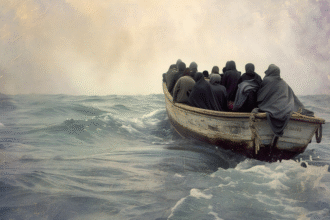Following the suspension of flights due to a significant labor dispute that caused hundreds of thousands of passengers’ journeys to be interrupted, Air Canada is now restarting operations. The nearly four-day Air Canada strike, in which over 10,000 flight attendants demanded fair salaries and scheduling improvements, has come to a conclusion with a tentative deal between the airline and the Canadian Union of Public Employees (CUPE).
After hours of talks with the assistance of a government mediator, the agreement was reached early on Tuesday. The deal’s specifics are still unknown, but the union called it “transformational.” Later that day, the airline started to resume flights, but warned that because of the aircraft and staffing chaos, it would take several days to fully resume operations.
What Caused the Strike by Air Canada?
CUPE members’ walkout over issues with compensation, unpaid work hours, and scheduling conditions sparked the start of the Air Canada strike. The airline’s prior contract offer, according to the union, was “below inflation” and did not take pre-flight responsibilities like waiting and boarding time into consideration.
Union members refused to back down in the face of a previous decision by the Canadian Industrial Relations Board that declared the strike illegal. After they rejected a government demand for binding arbitration over the weekend, their protest gained momentum.
Over 500,000 passengers were affected by the strike, which grounded hundreds of flights and left people stranded both domestically and overseas. Here is the link to our article on Flight Attendants Strike.
What Does the Tentative Agreement Cover?
According to reports, the proposal calls for immediate wage rises for flight attendants of between 8% and 12%; however, the exact conditions would not be revealed until ratification. The agreement also includes ground pay, which is payment for time spent on flight preparation. At least one hour is paid at 50% of the flight rate, with the amount increasing by 5% per year.
With the deal, years of unpaid labor came to an end, and CUPE celebrated it as a historic milestone. The union has signaled a cooperative return to normalcy by directing its members to fully support the restart of operations.
What Was the Government’s Reaction?
The Canadian Minister of Jobs and other federal authorities urged the parties to resume talks. Additionally, an official investigation into claims of unpaid labor in the aviation industry has begun. The settlement, according to Prime Minister Mark Carney, should guarantee just compensation and give Canadians travel consistency again.
The strike’s widespread effects on families, workers, and foreign visitors had put pressure on the government to take immediate action. Here is the link to our article on Strike Delays Resumptions.
When Will Normal Flight Schedules Return?
Air Canada said it would take a few days to fully restore regular service, even though flights started to operate on Tuesday evening. There are still logistical issues because staff and aircraft are dispersed over different areas.
The airline serves both domestic and international routes with about 700 flights each day. It is recommended that travelers anticipate possible delays during the transition time and frequently check flight status updates.
Final Thoughts
A major change in labor relations within Canada’s aviation industry has occurred with the end of the Air Canada strike. The union’s triumph underscores the increasing call for equitable compensation and acknowledgment of all labor hours. The accord establishes a precedent that might impact labor negotiations across the industry when operations stabilize. Today, both passengers and airline employees anticipate a more operational and egalitarian future.








